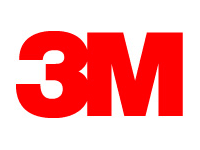Transistor Experiments
Objective
With this experiment, students will learn how transistors work and how they are used to make decisions. Students will also explore some example applications of transistors.
Terms to understand
Transistor: This is the basis of any electronic device you could mention that you have in your home, school, car, computer, games, etc. In most cases, it is really a simple switch which is either on or off, like answering a question, yes or no. The simple model of a transistor is shown below:
You can think of the transistor as having a puddle of electrons at the Drain end. When you provide a command to the Gate, it lets the electrons flow from the puddle into the Source. When this happens it is like saying YES to a question.
Drain: the place where electrons start out in a transistor
Gate: much like the gate of a fence, when it is off, this keeps electrons from leaving the Drain
Source: This is the place that the electrons need to arrive when the transistor says YES
Crystal: The arrangement of the atoms in a material (examples: ice, glass, silicon, concrete)
Lattice: the orderly alignment of atoms to make the least number of collisions
Threshold voltage: The voltage you will need to apply between the drain and the gate to make electrons flow
Materials used
- Simple cardboard tray with soda bottle tops hot glued to both sides.
- One tennis ball per table
- 4 small marbles per table
- Examples of printed circuit boards, wafers, chips
- A stack of text books (10 per table)
Part 1 – Lattice discussion
- Break into 6 groups of 5 each
- Each group is given a transistor lattice and 1 marble per student
- Starting with the side where bottle caps are scattered randomly, you should each try to shoot a marble 4 times to see if it can get through to the other side. Tally the results in the table below:
| Random Lattice Try # | Did it get through? (Yes or No) | Comments |
| 1 | ||
| 2 | ||
| 3 | ||
| 4 |
Now, turn the lattice over to the side with atoms in alignment.Repeat the experiment and record the results below
| Aligned Lattice Try # | Did it get through? (Yes or No) | Comments |
| 1 | ||
| 2 | ||
| 3 | ||
| 4 |
In our computer industry, people go through great pain to make sure the silicon used for chips is in a perfect alignment. Here is a very fragile silicon wafer that has real computer chips on it. Essentially it is made of glass so it can be easily broken. Handle it carefully.
Part 2 – Threshold Voltage
Each transistor is like a light switch that is either on or off in each circuit. This next experiment will illustrate how you can see a transistor turn on when you reach the threshold voltage. In may ways, voltage in an electronic circuit is like water that reaches a dam. The height of the water on the dam is like the voltage. The height of the water needed to run over the dam would be called the threshold voltage of the dam.
In this case, we are going to use our lattice structure that is aligned and a tennis ball. Again, everyone should get chance to do the experiment. When it is his or her turn, each student should place the tennis ball as shown in the illustration below on the aligned surface.
For this experiment, one student will hold the right side of the lattice on the table. A student across from them will place textbooks, one at a time under the edge that has the tennis ball. You will continue to add height until the “electron” (tennis ball) flows from the Drain to the Source in the lattice. Each student should perform this experiment and record their result in terms of book height required. Each book will count as 1/10 of a volt in voltage. We will tally this result around the room and average the results.
This process is called empirical determination of the threshold voltage and it is used in real life applications to determine the voltage at which a transistor will turn on.




